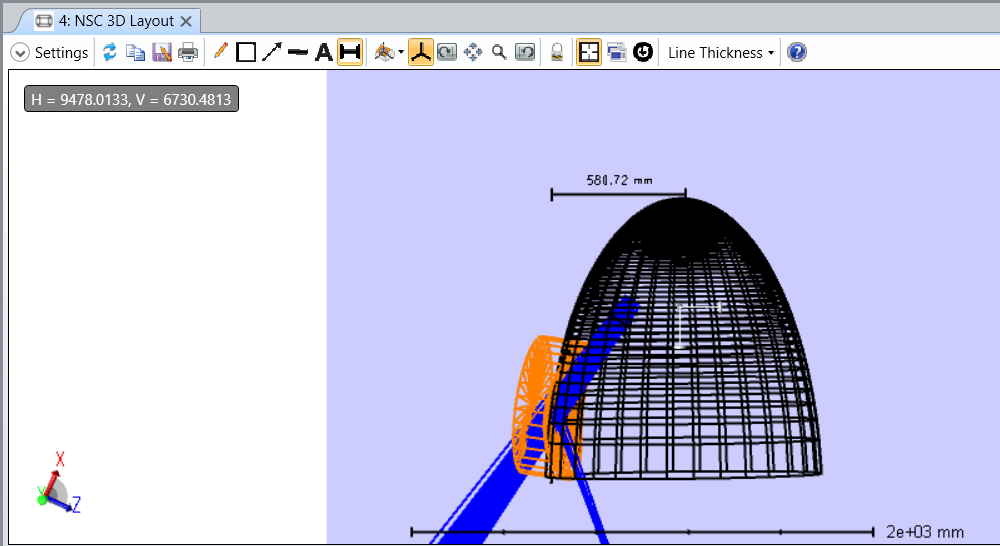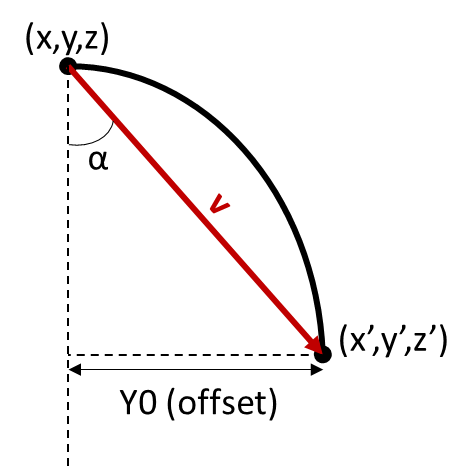Hi all,
I'm trying to reproduce an ellipsoidal off-axis mirror surface in Non-Sequential mode (which is part of a bigger optical system, hence the locations and orientations of sources and surfaces). I have reconstructed the parent ellipsoid as a biconic surface with its vertex in the following positions:

Now I want to reproduce the curvature of this parent surface at position of incidence of the source (similar to what an aperture would do in sequential mode). My understanding is that the Off-axis mirror should be the element to be used here. The incidence point is:

So there is an offset in positions X,Y and Z of the vertex of the parent biconic and the off-axis mirror. I constanly obtain Error 31 when trying to input the proper offset of the ellipsoid (which in the case of the system is around 1063mm). Beyond a certain offset (~600mm) Error 31 appears.
Any ideas on why does this error appear? I could probably use some boolean element to reconstruct the mirror, however my understanding is that the off-axis mirror should be the best NS element here.
Many thanks!
Eduard





